Advertisement
Study seeks to define risks of excess abdominal fat

Increased abdominal visceral adipose tissue (VAT) correlates with more aggressive and complicated inflammatory bowel disease (IBD) in adults, but no one had examined whether this finding applies to children as well. Until now.
Advertisement
Cleveland Clinic is a non-profit academic medical center. Advertising on our site helps support our mission. We do not endorse non-Cleveland Clinic products or services. Policy
A team of Cleveland Clinic Children’s gastroenterologists, in collaboration with colleagues in Cleveland Clinic’s Digestive Disease Institute and Lerner Research Institute, has completed the first retrospective study of this question and is enrolling patients in a novel prospective study to confirm and expand its retrospective findings.
“These investigations aim to better define the risks of excess abdominal fat in IBD and may improve clinicians’ ability to predict which children with IBD will benefit from early intensive therapy without the need for repeat imaging studies,” says Rishi Gupta, MD, of Cleveland Clinic Children’s Department of Pediatric Gastroenterology, who is principal investigator for the ongoing prospective trial.
The retrospective study, which has been submitted for publication, was a single-center retrospective cohort investigation that compared 114 pediatric patients with newly diagnosed IBD (101 with Crohn’s disease [CD] and 13 with ulcerative colitis) with 78 age-matched controls without IBD. All subjects had abdominal CT scans, which were obtained at the time of IBD diagnosis in the patient group and for other reasons in the control group. VAT volumes were measured from the CT scans for all subjects.
The researchers found the following (after adjusting for body mass index [BMI] and age):
These results ‒ indicating a correlation of IBD with increased abdominal fat, as well as an association between abdominal fat and disease activity and outcomes ‒ have prompted a prospective study to confirm the findings and assess an additional question: whether cytokines in blood derived from VAT cells correlate with VAT volumes and with disease activity.
Advertisement
“Adipose tissue has recently been recognized as producing a wide range of secretory factors, known collectively as adipokines, that play an important part in the immune response,” explains Dr. Gupta. “We suspect some of these adipokines may become activated and thus contribute to the inflammatory process of IBD.”
To test that hypothesis, he and colleagues are enrolling patients ages 5 to 20 who are scheduled to undergo colonoscopy at Cleveland Clinic Children’s for the purpose of establishing or ruling out an IBD diagnosis. They plan to enroll 30 patients with biopsy-confirmed IBD and 60 age-matched controls in whom IBD has been excluded.
All subjects undergo a baseline blood draw to assess for 11 serum adipokines (including TNF-alpha, IL-6, adiponectin and other less-well-studied cytokines) as well as baseline anthropometric measurement. Patients with IBD also will have VAT volumes measured from any MRI or CT studies ordered as part of their routine IBD management. The patients with IBD are being followed for 12 months for monitoring of disease activity, and control patients are monitored over the same period to confirm they are not subsequently diagnosed with IBD.
The researchers seek to do the following:
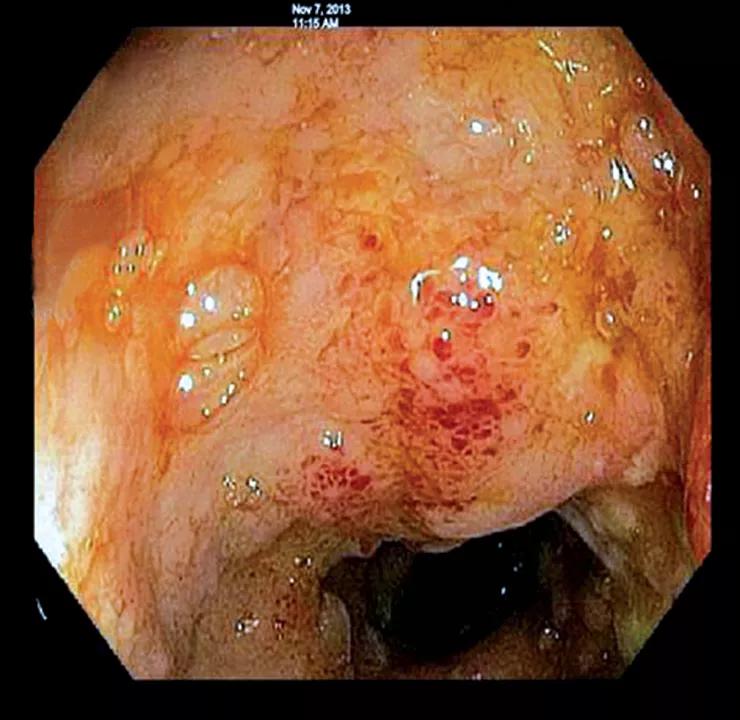
Colonoscopy image from a pediatric Chron’s disease patient showing the terminal ileum with erythema and ulceration

MRI showing increased visceral fat (yellow arrows) in a 12-year-old boy with IBD. Note the fluid-distended loops (blue arrows).
“If we find a correlation between some of these cytokines in the blood and MRI or CT findings, in the future we might be able to simply do repeat blood tests to assess disease activity rather than doing repeat imaging studies, which are not feasible because of radiation exposure, cost and other factors,” says Dr. Gupta.
He adds that correlating cytokine levels with disease activity might enable prediction of which children with IBD are at high risk of complications and thus prompt earlier treatment intensification to avoid complications. “This could yield a helpful noninvasive marker of disease progression,” he says.
An added benefit is better understanding of the interplay between IBD and obesity. “We are seeing that children with IBD tend to have increased visceral fat even if they are not obese,” Dr. Gupta says. “If these children become obese in addition to their extra visceral fat, that can be a dangerous double whammy” that requires extra vigilance to manage or to ward off in the first place.
Advertisement
Dr. Gupta expects to complete study enrollment by the end of 2014 and hopes to publish results by next year. While Cleveland Clinic Children’s knows of no other center currently pursuing this line of research in pediatric IBD, Dr. Gupta would be eager to expand these efforts to a multicenter trial if warranted by his study’s ultimate findings.
“We welcome the opportunity to enhance the power of our study and benefit more children with IBD.”
Top photo: The collaborative team that’s leading the Cleveland Clinic pediatric IBD study. From left to right: pediatric gastroenterologists Marsha Kay, MD, and Rishi Gupta, MD, along with adult-care gastroenterologists Jean-Paul Achkar, MD, and Claudio Fiocchi, MD of the Digestive Disease Institute and Lerner Research Institute.
Advertisement
Advertisement
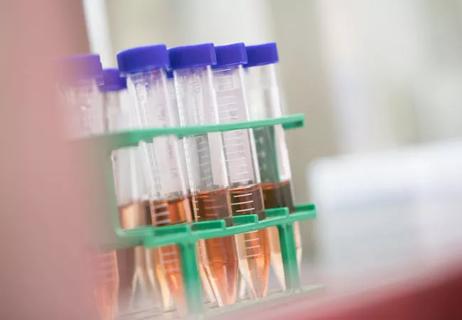
Consider offering your patients enrollment in a leading-edge clinical study
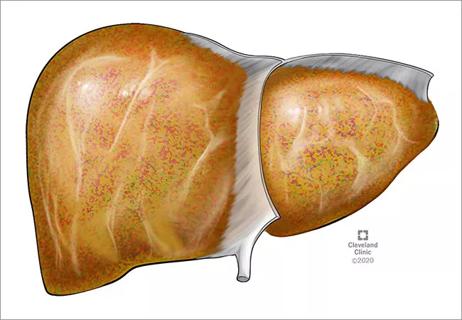
Findings underscore need for early screening and close follow-up

Consider offering your patients enrollment in a leading-edge clinical study
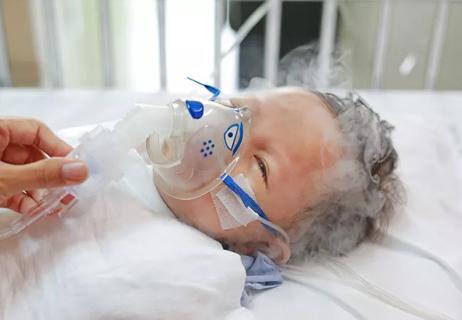
Titanium dioxide nanoparticles exaggerate inflammation induced by RSV
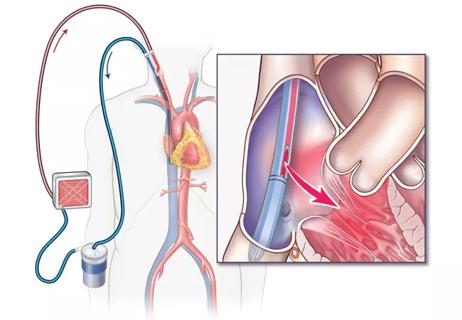
Study supports using the direct thrombin inhibitor

Estimating risk remains elusive

The search for predictive factors continues

A conservation with Karen Murray, MD